At this stage of 2024, things are looking a lot different for a Las Palmas side that boasted one of the most impressive defensive records in La Liga earlier in the year.
They made their presence known from the outset of the 23/24 season, frustrating teams across the country with their passing proficiency and ability to deny their opposition any meaningful time in possession of the football.
Guided by García Pimienta’s positional play philosophies, Las Palmas was certainly looking likely to cement its position within the top flight for years to come, but a significantly worrying winless streak of 23 games has left fans wondering where it all went wrong.
Los Amarillos saw Pimienta’s early tactical brilliance being picked apart as the season wore on and teams grew accustomed to their weaknesses.
The former Barcelona youth coach opted for a move to Sevilla before things could become distressing.
Having narrowly missed out on promotion to La Liga with Real Oviedo, Luis Carrión ultimately stood out as a candidate to emulate Las Palmas’ ball dominance and attack-minded style.
But after an embarrassing winless start to the 24/25 season, it is evident that Carrión’s football ideologies were not aligned with what made the club so tactically successful over the last couple of seasons—leading to his swift sacking after just nine matches.
With the Gran Canaria-based club ready to welcome Diego Martínez’s appointment, it is clear that for their new successor to succeed, they must find a way to reinvigorate their strengths and mitigate some weaknesses that have plagued their 24/25 season thus far.
This tactical analysis and team-focused scout report will portray some of the reasons why Las Palmas has witnessed such a dramatic fall and provide insight into their switch in tactics this season.
Our analysis will also examine some ways in which Martínez can get the most out of his new squad, placing more faith in some of the shining lights that have stood out in relative darkness.
Problems With García Pimienta’s Positional Play
Positional play, or Juego de Posición, has become a key component over the years in the Spanish game and was a philosophy that Pimienta relied on heavily throughout last season.
It focuses on the short, intricate passing sequences synonymous with a more technical style of play, understanding your players’ abilities, and creating a shared culture that emphasizes moving the ball around to great effect.
These fundamental principles were the basis for Las Palmas’ possession-based style, especially when you understand that the less time your opposition has with the ball, the less chance they have to invoke their own offensive game plan and harm your defensive structure.
This worked well for Las Palmas from the start of the 23/24 season, as their rapid and accurate ball progression was used to break the lines quickly.
The opposition was startled by their intelligent off-the-ball movement and capacity to manipulate defensive positioning.

But for Las Palmas, the most critical turning point would have to be their vulnerability when their opposition can commit to pressing high from the outset, denying them enough time or space to function within their comfortable system.
Adding in elements of uncertainty and panic has forced Las Palmas to stray away from what made them so successful as of late, with Alaves here shown to be fully committed to forcing Las Palmas back towards their own penalty area, forcing the goalkeeper to go long and more often than not cede possession.

This direct style of play hasn’t necessarily suited the strengths of Las Palmas’ squad this year, despite new signing Oli McBurnie’s ranking within the 99th percentile for aerial duels won in the Premier League last season (7.73 per 90).
Even though the Scotsman may be proficient in the air, the lack of mobility from their widemen, coupled with the minimal threat from runners in behind, has meant that Las Palmas are unable to profit efficiently from such opportunities should they win the first ball.
Another understated change that Las Palmas have encountered this season is their switch in goalkeeper, which has not only impacted their defensive ability but also their success when building out from the back.
After a summer transfer didn’t quite come to fruition, Álvaro Valles has been subject to somewhat of an exile as the Spaniard looks to move on in the next transfer window- leaving veteran goalkeeper Jasper Cillessen to fill in between the sticks.
The following graphic really highlights the discrepancy between the two shot stoppers, particularly concerning the more technical aspects of the game.
These allowed Valles to emulate the skill of a world-class modern-day keeper when it comes to using the ball at his feet.
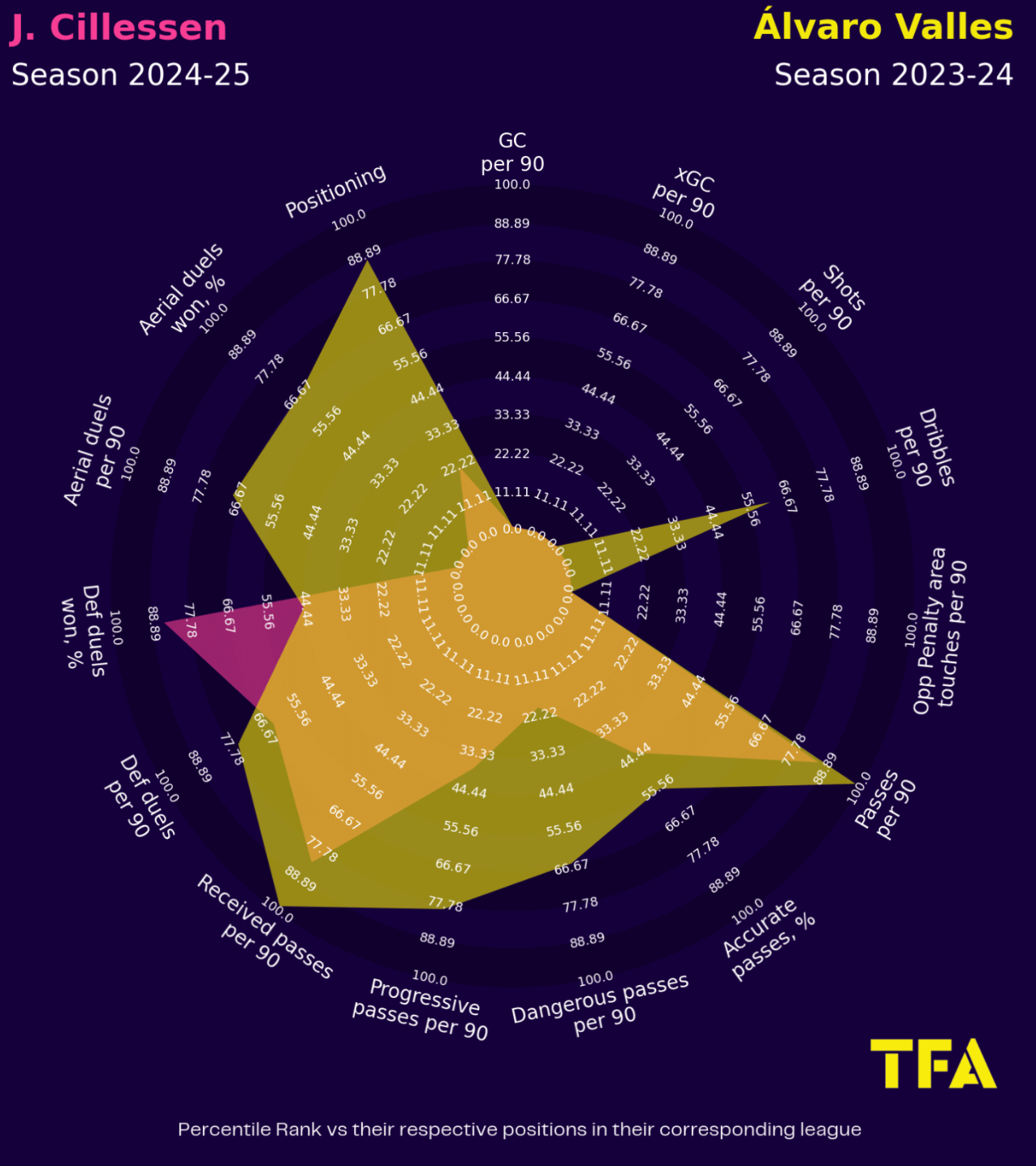
His position within the defensive line as an extra passing outlet was invaluable for Las Palmas’ possession-based style, and it appears that we are beginning to see the detrimental effects of his absence.
Las Palmas Defensive Reshuffling
One thing that Las Palmas could always seem to rely on was their defensive structure and ability to stifle opposition threat, usually as a result of the difference in energy levels when facing sides who have been chasing after the ball all game.
However, handing the opposition a greater frequency of attacking opportunities further increases the amount of stress placed upon the Las Palmas backline, eventually wearing away at their previous collective strength.
It goes hand in hand with their troubles progressing the ball out of the defensive third, as more erratic behaviour under pressure has forced several high turnovers, which has allowed their opposition to find holes in their defensive structure.
A great example of this would be when Las Palmas faced Osasuna.
Their lack of intricate ball progression resulted in a more expansive attacking structure, reducing the amount of disguise in their passing direction.
This allowed the Osasuna player to jump in and spark a damaging counterattack.
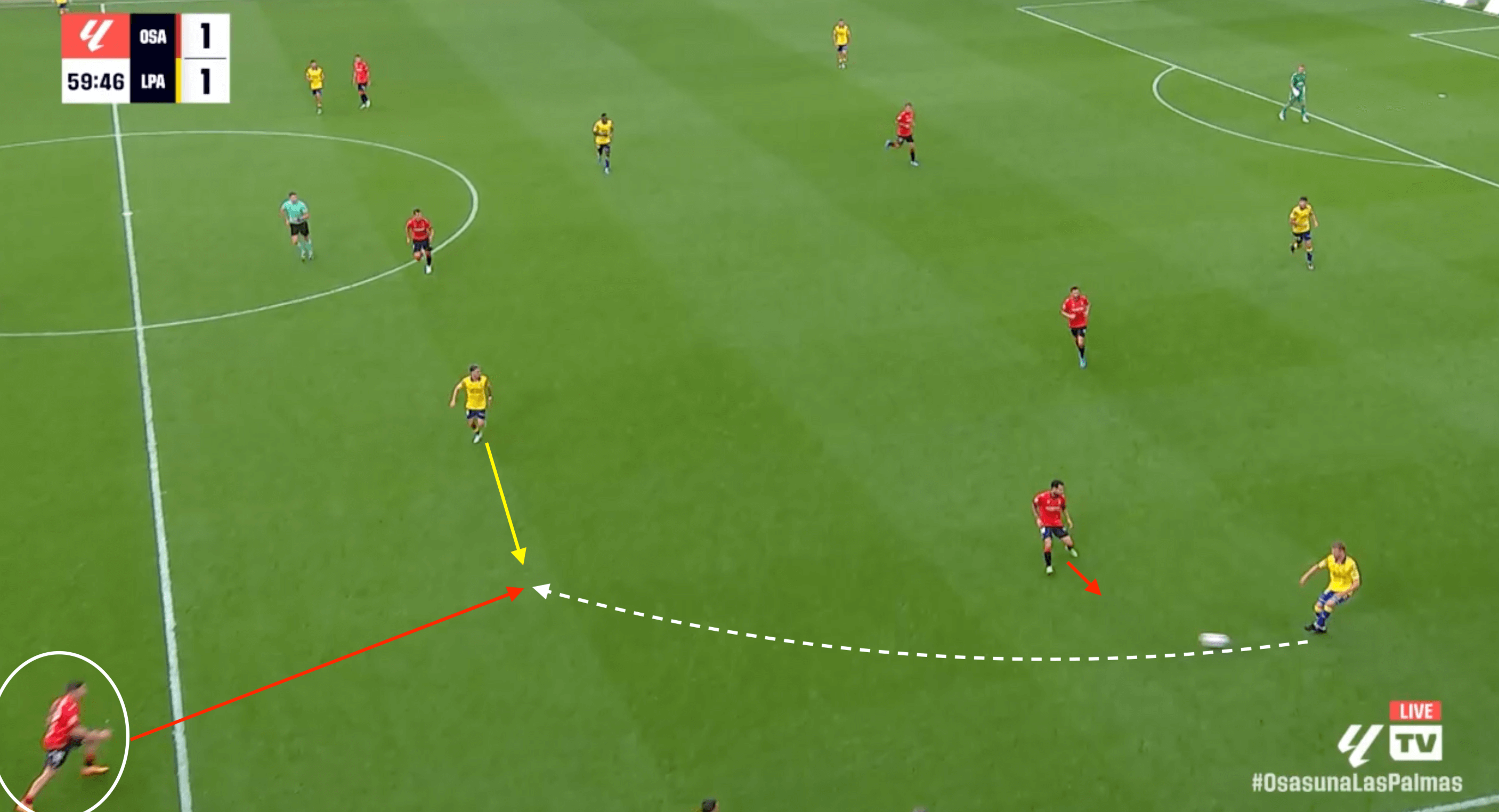
Even though moments of transition aren’t necessarily meant to be easy for sides to defend, we see just how vulnerable Las Palmas are as a result of Viti’s advanced positioning on the right flank, leaving Juanma Herzog wholly overwhelmed in a 3v1 scenario at the back post.
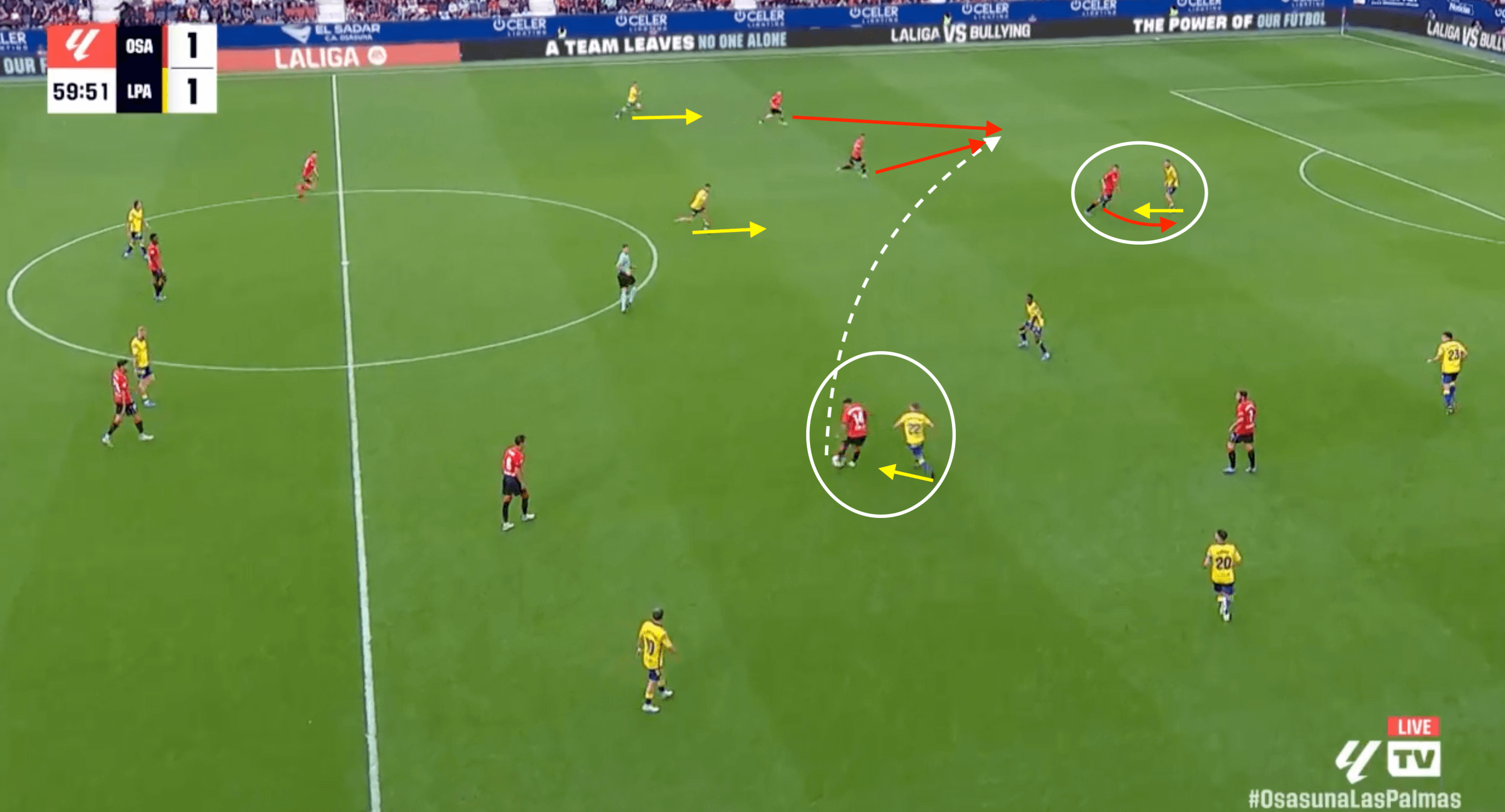
This doesn’t necessarily mean that Las Palmas must become a regressive side that looks ultra-conservative in the face of their opposition.
Still, their counter-pressing efforts thus far have been generally sub-par.
Our following example highlights how Las Palmas’ defensive structure can once again be bypassed with relative ease, as Alalves were able to regain possession within the middle third and swiftly break into Las Palmas territory with some questionable pressing angles.

Now, despite the ease at which Alaves were able to break into the final third, Las Palmas’ numerical superiority would usually be a point of confidence, but further lapses in defensive concentration when tracking runs at the back post have had a significantly damaging effect on their ability to control games.
Their defensive metrics have seen a slight increase from last season, but this would further strengthen the argument that the Las Palmas defence is under much more pressure- especially when we see their shots against per 90 jump from 9.38 to 11.75 between 23/24 and 24/25.
Las Palmas Attack – Lack Of Imagination
Last season, Las Palmas’s attacking play aimed to be patient when breaking into the final third, selecting their passing options wisely while prioritising a collective effort rather than individual brilliance.
But crucially, this was when Los Amarillos could rely on a more committed defensive structure to keep them in matches, as this method of attack is much more difficult when you find yourself a goal down and a sense of urgency is required.
This was on display against Celta Vigo, as Las Palmas were able to use the third-man principle, with McBurnie laying off the ball for Moleiro to receive between the lines—just where the inventive Spaniard likes to operate.
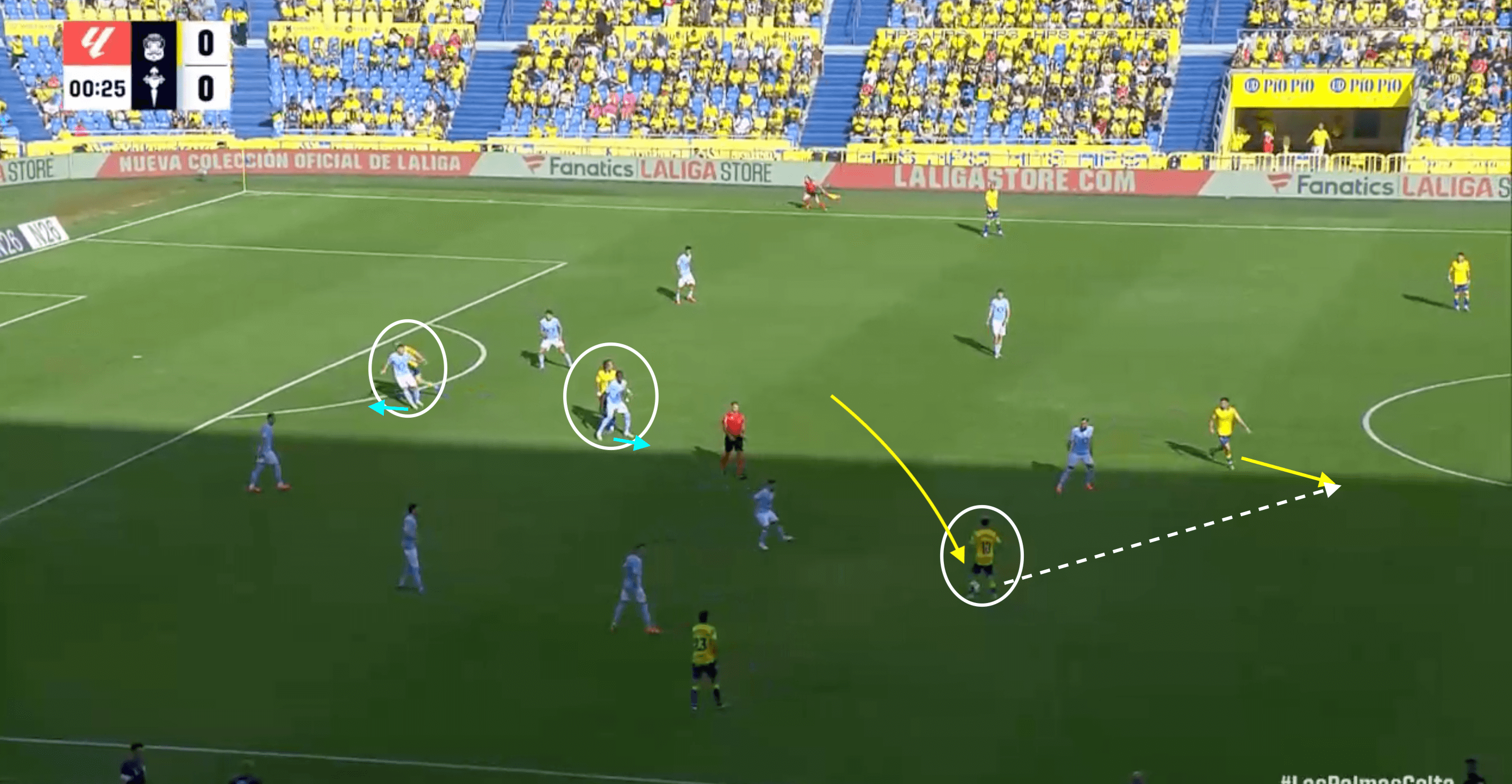
But things ultimately went south when we saw Moleiro being far too hesitant in his attacking approach, without the necessary attacking movement to hurt a Celta Vigo side who were able to reshape and negate any real threat quickly.
One of Las Palmas’ most impressive traits last season was that their controlling tempo could spark into a fast-paced flowing sequence, which left defenders reeling, something which we have seen glimpses of this season against the likes of Real Madrid.
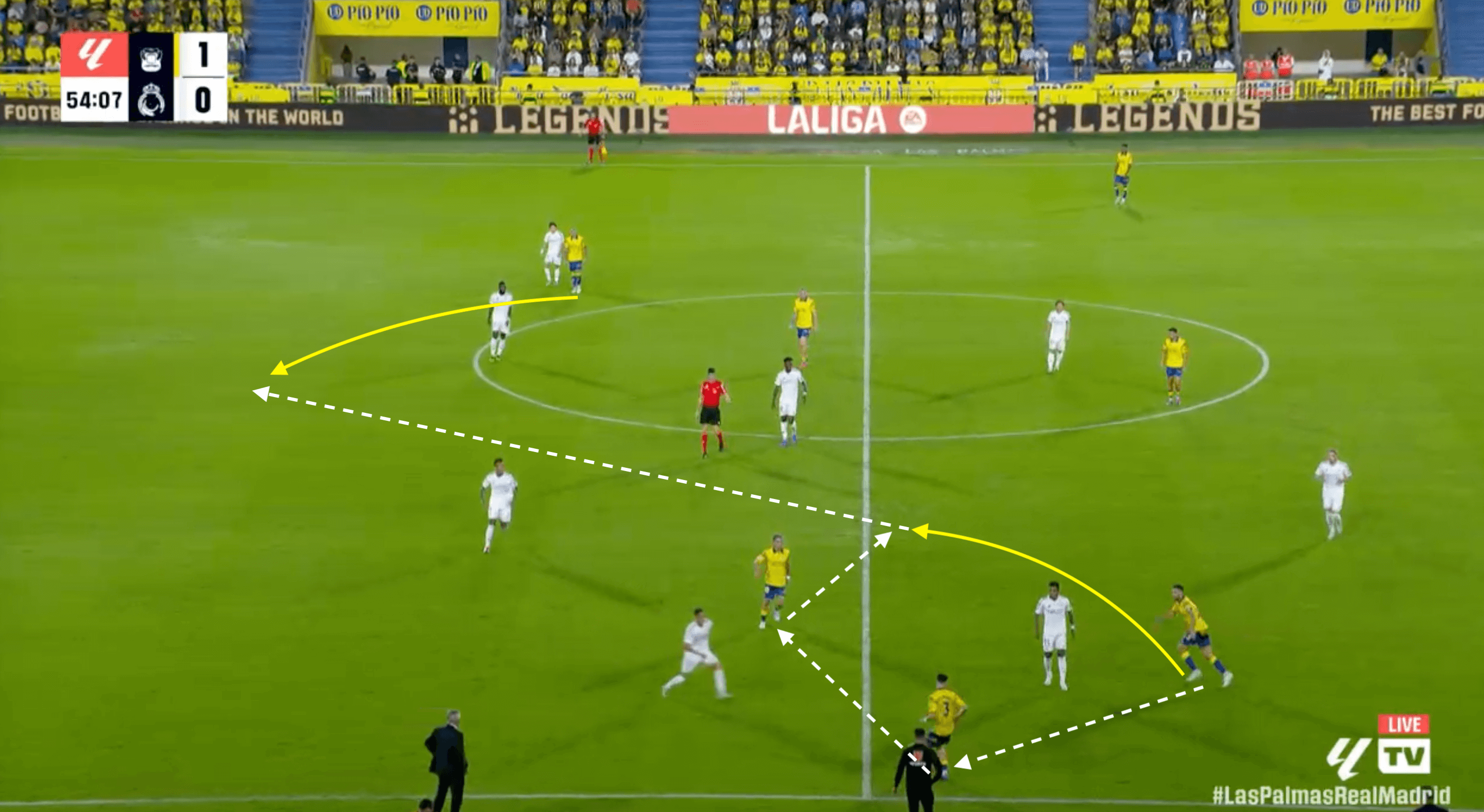
This style of play offers a valuable level of unpredictability when attacking, but it has been far too infrequent during the early moments of the season.
In fact, Luis Carrión’s dismissal came after Las Palmas’ most embarrassing moment of the season to date: their attacking unit was unable to break down 9-man Celta Vigo for the best part of 40 minutes of football.
The exciting statistic emerging from all of this discussion would have to be the fact that Las Palmas has actually been the most accurate team in La Liga for through balls this season (46.4%), but only 2.81 per 90 falls far short of the league average for frequency.
Las Palmas Keys To Success Going Forward Under Diego Martínez Tactics
Diego Martínez’s coaching style seems to value the squad’s familiarity with certain football styles and is more than happy to steady the ship by taking things ‘back to basics’.
Therefore, it is clear that Las Palmas should look to regain its identity as a team that is difficult to face and can outlast even the most formidable opposition in Spanish football.
The double pivot was highly valued under Garcia Pimienta, as the mobility of the two midfielders could create trouble for those looking to press high and cut out effective passing outlets.
With that in mind, one point of focus could be to further the footballing development of Dário Essugo in a progressive double pivot alongside midfield orchestrator Kirian Rodríguez.
At only 19 years of age, Essugo has stood out in his limited game time as a player who constantly looks to quickly break the lines with a pass into the feet of the striker.
We already know how proficient Kirian was with his ball circulation last season.
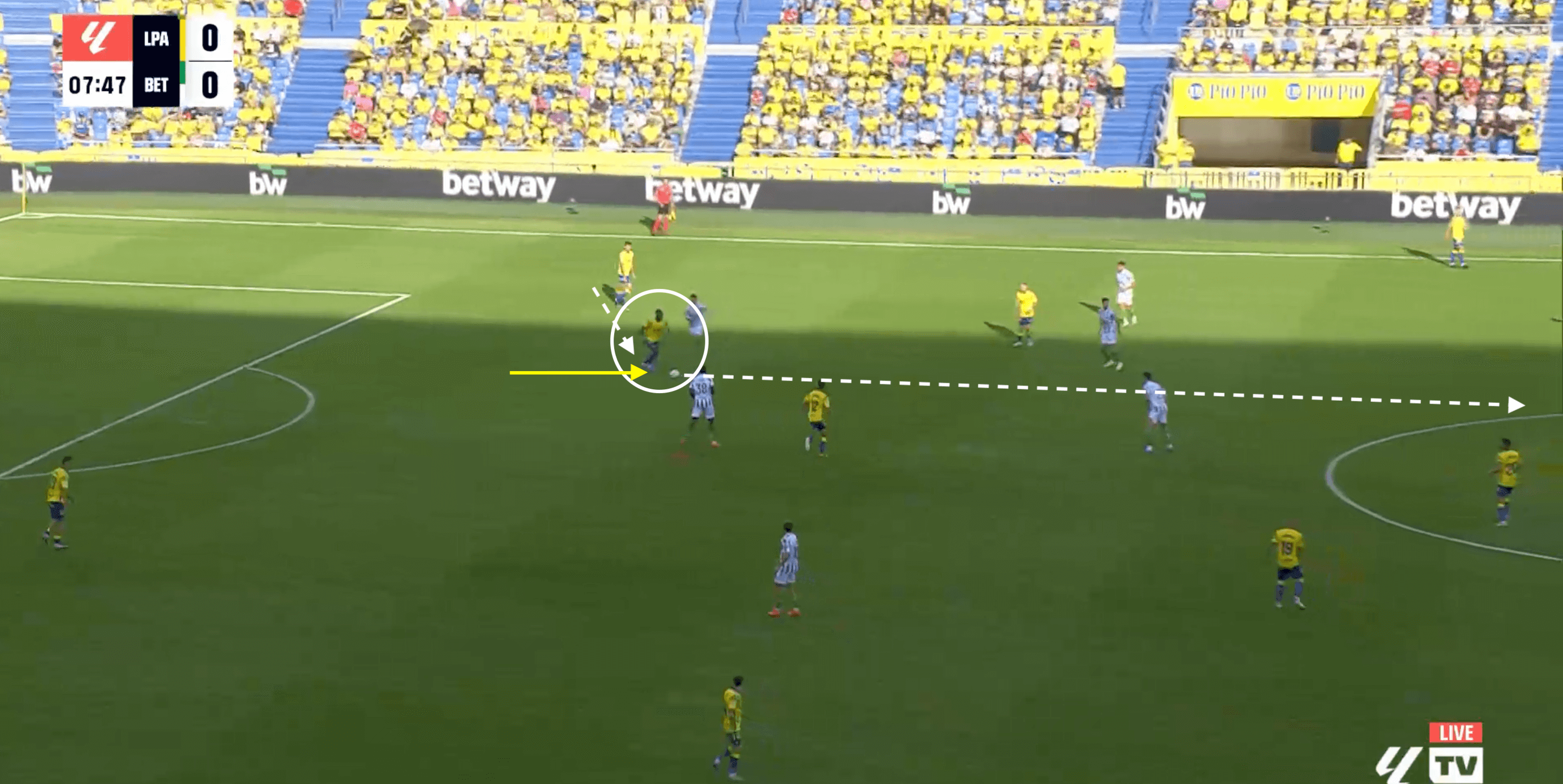
It would mark an injection of youthful confidence into the Las Palmas midfield’s base, with Essugo able to learn from someone who certainly knows how to embody true positional play.
The next suggestion may seem too obvious for many, but it is clear that Las Palmas must get the ball at Alberto Moleiro’s feet to regain their attacking threat.
Last season, Moleiro was supported on the left flank thanks to Sergi Cardona’s advanced movement from the left back, allowing the attacking midfielder to drift inside and cause havoc.
But with Cardona moving to Villarreal, Las Palmas’ full-backs are now generally operating in much more conservative areas, on average around 43.6m from their own goal (3rd lowest in LaLiga).
This has left Moleiro isolated out wide at times, where we see his excellent dribbling ability having to bail him out of some difficult circumstances.
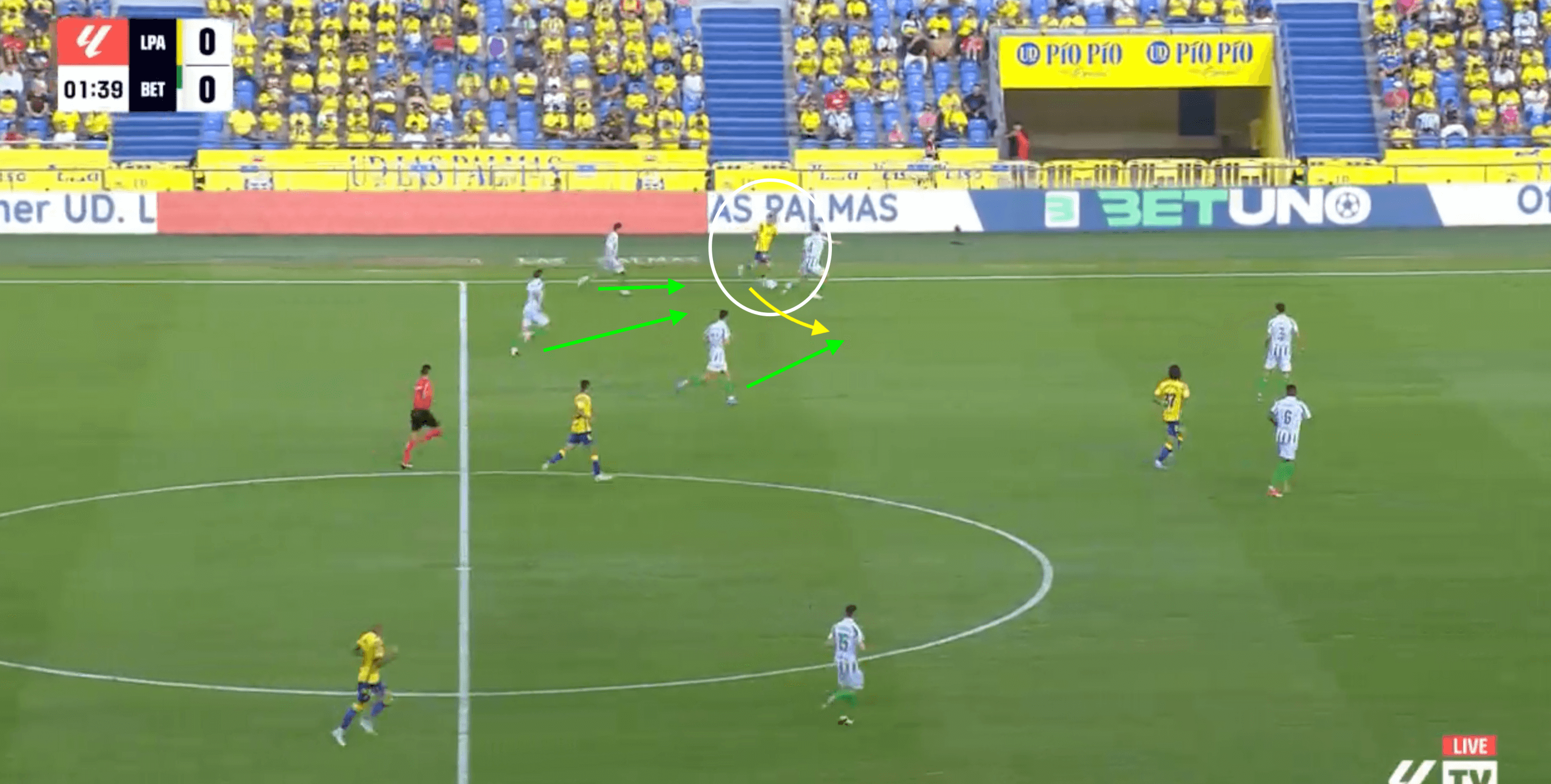
Suppose Las Palmas can regain some of their composure within the final third.
In that case, we can hopefully begin to see more attacking sequences similar to those that were on display in their match against Villarreal, with Moleiro able to attack the opposing defence through the central areas of the pitch with a multitude of options.
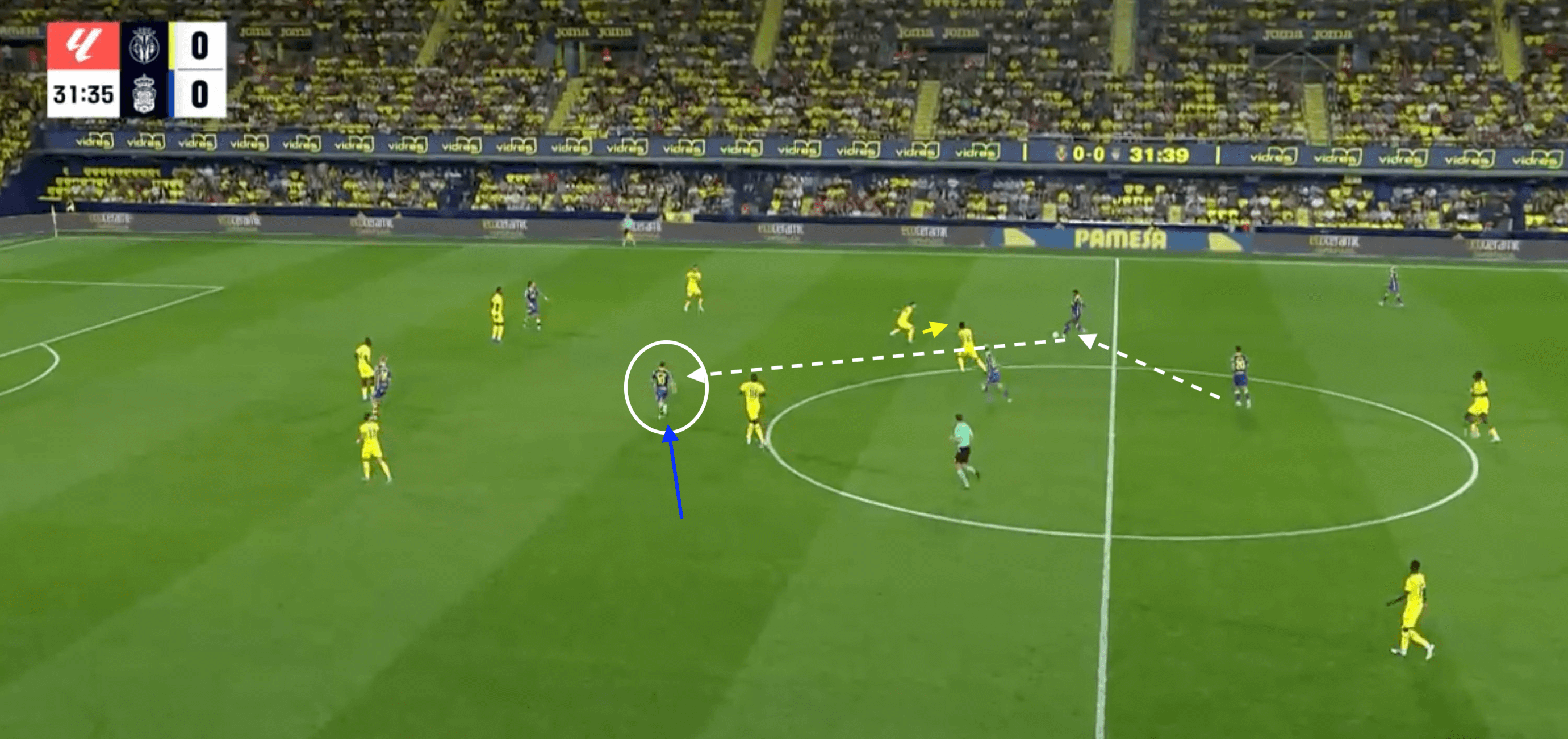
Conclusion
After such a dismal start to the season, Las Palmas fans will certainly hope that another manager change will be the important catalyst for realigning the club with the footballing philosophies that allowed them to have their moment in the sun last campaign.

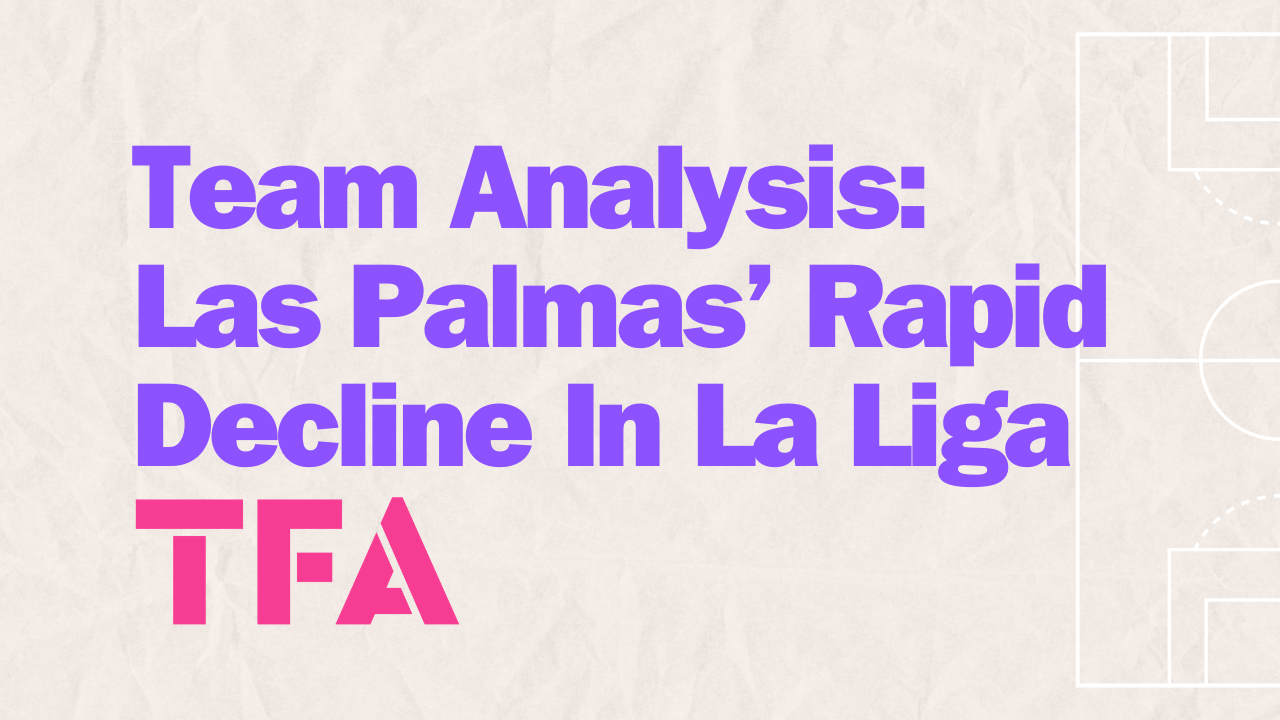



Comments